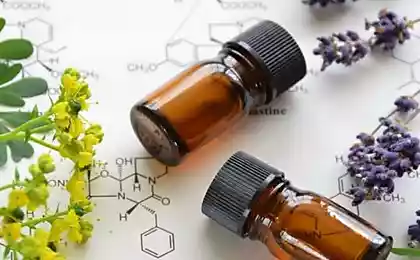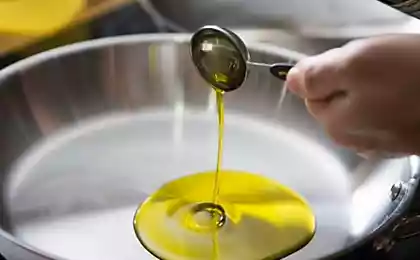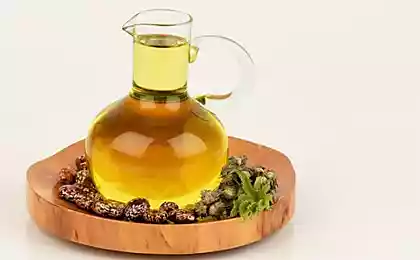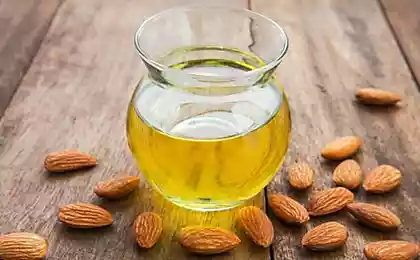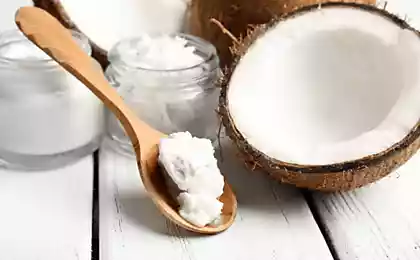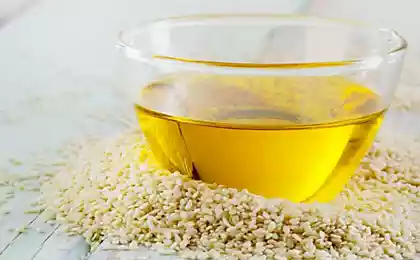245
King of all oils: Healing frankincense oil
Incense, also known as oliban It is a tree of the Boswellia family, particularly Boswellia Sacra and Boswellia carteri. Milky white juice is obtained from the bark of the tree, which is given to harden for several days, and then droplets of this resin are scraped off.
Boswellia trees grow in African and Arab regions, including Yemen, Oman, Somalia and Ethiopia. Oman is the most famous and oldest source of incense. For thousands of years, incense was traded there and shipped to other Mediterranean countries, India and China.
Incense of the highest quality is transparent and silvery, with a greenish tint. Brown-yellow varieties are the cheapest and most common. The best incense in Oman is usually reserved for the sultan and rarely taken out of the country.
Incense is traditionally burned as an incense, and ash is ground into powder to make an eye pencil used by Egyptian women. Nowadays, this resin is distilled with steam to obtain an aromatic essential oil, which has many useful properties.
Incense oil It has a soothing and relaxing woody, earthy, spicy and slightly fruity aroma. It is said to be sweeter, fresher and cleaner than the aroma of incense resin.

Application of frankincense oil
Incense oil has long been revered in the Middle East, where it has been used in religious ceremonies as oil for thousands of years. It is also a popular ingredient in cosmetics and has even been found in burials of Anglo-Saxons and ancient Egyptians.
I believe that frankincense oil is one of the best essential oils, which can be used for healing purposes. It is known for its soothing properties, is useful for visualization, improve spiritual connections, and helps overcome stress and despair.
In aromatherapy Incense oil inhaled or sprayed with an evaporator is a very effective sedative that induces feelings of mental peace, relaxation and satisfaction, helps reduce anxiety, anger and stress.
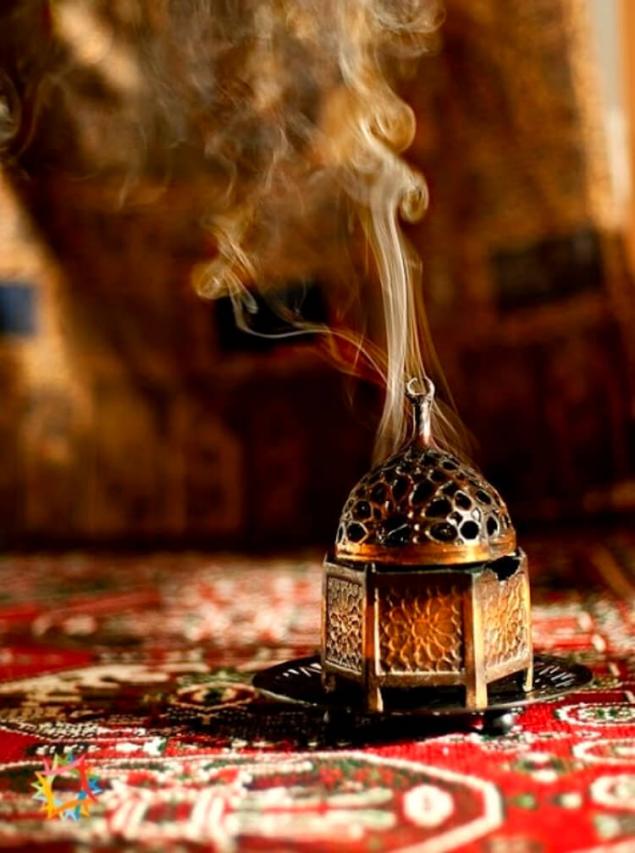
Incense oil promotes healthy cell regeneration and supports the health of existing cells and tissues. It is. good for skin health, helps with its dryness, fights signs of aging and reduces the appearance of stretch marks and scars.
The astringent properties of frankincense oil help:
Composition of frankincense oil
The main components of frankincense oil are ketone alcohol (olibanol), resinous substances (30-60 percent) and terpenes such as a- and p-pinene, camphene, dipenten and fellandrene. It also contains alpha-pinene, actanol, bornyl acetate, linalool, octyl acetate, insensol acetate and insensil.
Monoterpenes and sequiterpenes are the most valuable elements of incense oil. According to the “Handbook of Essential Oils”, authors Connie and Alan Hyley, monoterpenes help prevent the action of toxins and remove them from the liver and kidneys, and also have antiseptic, antibacterial, stimulating, weak analgesic and expectorant properties.
At the same time, sequiterpenes are able to cross the blood-brain barrier and simulate the limbic system of the brain, as well as the hypothalamus, epiphysis and pituitary gland.
Useful properties of frankincense oil
The health benefits of incense oil are mainly due to its anti-inflammatory, astringent, antiseptic, disinfectant, digestive, diuretic and expectorant properties. In addition, it has wound-healing and wind-healing properties, stimulates menstruation, promotes healing of scars and protects cells from external damage.
Incense oil is considered tonic, because it has a beneficial effect on all body systems, including the digestive organs, respiratory organs, nervous and excretory systems. It's also promotes the absorption of nutrients and strengthens the immune system.

The benefits of frankincense oil in conditions such as:
The potential of incense for cancer treatment is being investigated. According to scientists, this oil has an active substance that can help stop the spread of cancer.
How to cook frankincense butter
Incense oil is made by distilling raw resin with steam. When buying frankincense oil, try to choose only 100% pure essential oil of the highest quality.
Besides, Do not confuse frankincense essential oil with aromatic. Essential oils are derived from plants, and aromatic oils are usually created artificially and often contain synthetic chemicals. Although they smell good and are usually much cheaper, aromatic oils do not have the medicinal properties of organic essential oils.
How does frankincense oil work?
The therapeutic effect and properties of frankincense oil can be obtained by its local application, breathed diffuser or swallow in very small quantities. To ease the pain, simply rub the oil into the affected areas with massage movements.
Inhaling it with a diffuser or inhaler helps to treat colds and relieve respiratory stagnation. You can splash a few drops on a clean cloth and inhale the aroma or add oil to the water for a rejuvenating bath.
Incense oil can be applied directly to the skin or mixed with other carrier oils such as jojojoba oil, sweet almonds, avocado, patchouli, rosemary, sage, citrus and basil.
Is frankincense oil safe?
Yes, frankincense is generally safe. However, I advise you to do a test first to see if you are sensitive to this oil. When consuming incense oil inside, dissolve the drop in edible carrier oil (for example, coconut), a teaspoon of honey, a glass of purified water or any non-acid and non-dairy drink.
Or put two drops under your tongue. But remember that children under 6 years of age are not recommended to swallow this oil.
In addition, older children and adolescents may need higher dilutions.
And don't forget: Not all brands of frankincense oil are suitable for ingestion, so be sure to check the label before taking it..
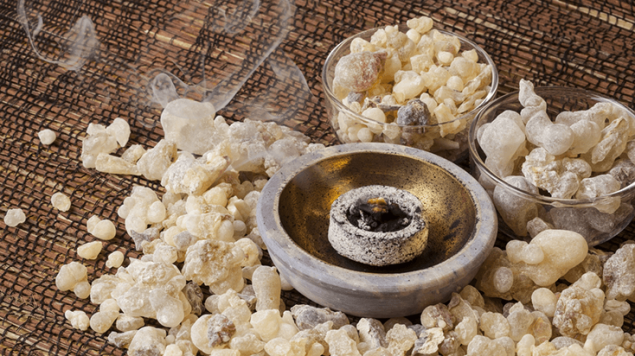
Side effects of frankincense oil
Serious side effects of this oil are not reported. However, in rare cases, frankincense oil can cause skin rashes and gastrointestinal disorders such as nausea, stomach pain and increased acidity.
It is also capable of thinning the blood and may increase the risk of abnormal bleeding in people with bleeding disorders or taking anticoagulants.
Incense essential oil is not recommended for pregnant women and nursing mothers, as it can cause menstruation, which can be dangerous for the unborn fetus.
Prepared by Dr. Joseph Mercola
The materials are informative in nature. Remember, self-medication is life-threatening, for advice on the use of any drugs and treatment methods, consult a doctor.
P.S. And remember, just changing our consumption – together we change the world!
Source: russian.mercola.com/sites/articles/archive/2016/07/28/%D0%BC%D0%B0%D1%81%D0%B%D0%BE-%D0%BB%D0%D0%B0%D0%B4%D0%D0%BD%D0%B0.aspx
Boswellia trees grow in African and Arab regions, including Yemen, Oman, Somalia and Ethiopia. Oman is the most famous and oldest source of incense. For thousands of years, incense was traded there and shipped to other Mediterranean countries, India and China.
Incense of the highest quality is transparent and silvery, with a greenish tint. Brown-yellow varieties are the cheapest and most common. The best incense in Oman is usually reserved for the sultan and rarely taken out of the country.
Incense is traditionally burned as an incense, and ash is ground into powder to make an eye pencil used by Egyptian women. Nowadays, this resin is distilled with steam to obtain an aromatic essential oil, which has many useful properties.
Incense oil It has a soothing and relaxing woody, earthy, spicy and slightly fruity aroma. It is said to be sweeter, fresher and cleaner than the aroma of incense resin.

Application of frankincense oil
Incense oil has long been revered in the Middle East, where it has been used in religious ceremonies as oil for thousands of years. It is also a popular ingredient in cosmetics and has even been found in burials of Anglo-Saxons and ancient Egyptians.
I believe that frankincense oil is one of the best essential oils, which can be used for healing purposes. It is known for its soothing properties, is useful for visualization, improve spiritual connections, and helps overcome stress and despair.
In aromatherapy Incense oil inhaled or sprayed with an evaporator is a very effective sedative that induces feelings of mental peace, relaxation and satisfaction, helps reduce anxiety, anger and stress.

Incense oil promotes healthy cell regeneration and supports the health of existing cells and tissues. It is. good for skin health, helps with its dryness, fights signs of aging and reduces the appearance of stretch marks and scars.
The astringent properties of frankincense oil help:
- strengthen the gums and roots of the hair,
- stop bleeding in the wound,
- accelerate the healing of cuts, acne, insect bites and abscesses.
Composition of frankincense oil
The main components of frankincense oil are ketone alcohol (olibanol), resinous substances (30-60 percent) and terpenes such as a- and p-pinene, camphene, dipenten and fellandrene. It also contains alpha-pinene, actanol, bornyl acetate, linalool, octyl acetate, insensol acetate and insensil.
Monoterpenes and sequiterpenes are the most valuable elements of incense oil. According to the “Handbook of Essential Oils”, authors Connie and Alan Hyley, monoterpenes help prevent the action of toxins and remove them from the liver and kidneys, and also have antiseptic, antibacterial, stimulating, weak analgesic and expectorant properties.
At the same time, sequiterpenes are able to cross the blood-brain barrier and simulate the limbic system of the brain, as well as the hypothalamus, epiphysis and pituitary gland.
Useful properties of frankincense oil
The health benefits of incense oil are mainly due to its anti-inflammatory, astringent, antiseptic, disinfectant, digestive, diuretic and expectorant properties. In addition, it has wound-healing and wind-healing properties, stimulates menstruation, promotes healing of scars and protects cells from external damage.
Incense oil is considered tonic, because it has a beneficial effect on all body systems, including the digestive organs, respiratory organs, nervous and excretory systems. It's also promotes the absorption of nutrients and strengthens the immune system.

The benefits of frankincense oil in conditions such as:
- Arthritis and rheumatoid arthritis (RA) Research conducted by scientists from Cardiff University found that frankincense can inhibit the production of key inflammatory molecules, helping to prevent the breakdown of cartilage tissue, which is the cause of this disease.
In addition, Indian frankincense or boswellin, which also belongs to the genus Boswellia, has been found to significantly reduce inflammation in animal studies. I admit, boswellin is one of my favorite remedies. I have been repeatedly convinced of its effectiveness as a natural painkiller for many of my former patients with rheumatoid arthritis (RA). - Colds and respiratory disordersfrankincense oil dilutes sputum deposited in the lungs and airways, and also alleviates stagnation associated with bronchitis.
- Oral health problemsThe antiseptic properties of this oil help to cope with bad breath, caries, toothache, stomatitis and other infections.
- Digestive disorders frankincense oil accelerates the secretion of gastric juice, bile and acids, and stimulates peristalsis to facilitate the proper movement of food through the intestines.
- Uterine health frankincense oil regulates estrogen production in women and reduces the risk of postmenopausal tumors or cysts in the uterus (uterine cancer). It also regulates the menstrual cycle in premenopausal women.
The potential of incense for cancer treatment is being investigated. According to scientists, this oil has an active substance that can help stop the spread of cancer.
How to cook frankincense butter
Incense oil is made by distilling raw resin with steam. When buying frankincense oil, try to choose only 100% pure essential oil of the highest quality.
Besides, Do not confuse frankincense essential oil with aromatic. Essential oils are derived from plants, and aromatic oils are usually created artificially and often contain synthetic chemicals. Although they smell good and are usually much cheaper, aromatic oils do not have the medicinal properties of organic essential oils.
How does frankincense oil work?
The therapeutic effect and properties of frankincense oil can be obtained by its local application, breathed diffuser or swallow in very small quantities. To ease the pain, simply rub the oil into the affected areas with massage movements.
Inhaling it with a diffuser or inhaler helps to treat colds and relieve respiratory stagnation. You can splash a few drops on a clean cloth and inhale the aroma or add oil to the water for a rejuvenating bath.
Incense oil can be applied directly to the skin or mixed with other carrier oils such as jojojoba oil, sweet almonds, avocado, patchouli, rosemary, sage, citrus and basil.
Is frankincense oil safe?
Yes, frankincense is generally safe. However, I advise you to do a test first to see if you are sensitive to this oil. When consuming incense oil inside, dissolve the drop in edible carrier oil (for example, coconut), a teaspoon of honey, a glass of purified water or any non-acid and non-dairy drink.
Or put two drops under your tongue. But remember that children under 6 years of age are not recommended to swallow this oil.
In addition, older children and adolescents may need higher dilutions.
And don't forget: Not all brands of frankincense oil are suitable for ingestion, so be sure to check the label before taking it..

Side effects of frankincense oil
Serious side effects of this oil are not reported. However, in rare cases, frankincense oil can cause skin rashes and gastrointestinal disorders such as nausea, stomach pain and increased acidity.
It is also capable of thinning the blood and may increase the risk of abnormal bleeding in people with bleeding disorders or taking anticoagulants.
Incense essential oil is not recommended for pregnant women and nursing mothers, as it can cause menstruation, which can be dangerous for the unborn fetus.
Prepared by Dr. Joseph Mercola
The materials are informative in nature. Remember, self-medication is life-threatening, for advice on the use of any drugs and treatment methods, consult a doctor.
P.S. And remember, just changing our consumption – together we change the world!
Source: russian.mercola.com/sites/articles/archive/2016/07/28/%D0%BC%D0%B0%D1%81%D0%B%D0%BE-%D0%BB%D0%D0%B0%D0%B4%D0%D0%BD%D0%B0.aspx







